
Kendo World 6.4
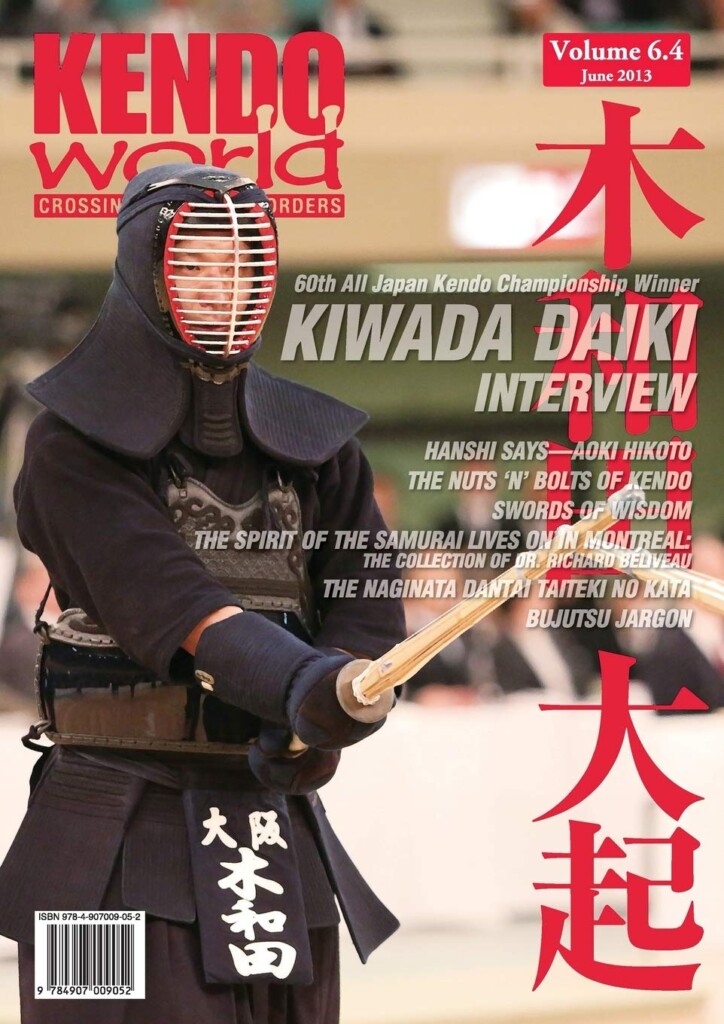
Editorial
By Michael Ishimatsu-Prime
In the editorial, Michael Ishimatsu-Prime reflects on visiting the 109th Kyoto Embu Taikai in May and discusses some of the highlights, most notably the participation of the last two Hanshi 7-dan sensei who are 99 and 90 years old, and also the bout between Sakudō Masao-sensei and Hamasaki Mitsuru-sensei which was the epitome of “katte-utsu” – “win and then strike”. The upcoming Sport Accord Combat Games that will be held in St. Petersburg, Russia, is also discussed along with Olympic kendo.
Kiwada Daisuke Interview
By Blake Bennett
KENDO WORLD EXCLUSIVE!! Staff writer Blake Bennett visited the Osaka Police training centre to interview the current All Japan Champion, Kiwada Daisuke. Kiwada discusses his motivations, difficulties and aims in kendo.
Hanshi Says
Hanshi Says is a popular series in which Japan’s top Hanshi teachers give hints of what they are looking for in grading examinations based on wisdom accumulated through decades of training. This issue features Aoki Hikoto-sensei from Oita prefecture who passed the 8-dan examination in 1987, and was awarded the title of Hanshi in 1995. He talks about the importance of cultivating one’s overall capacity and using seme effectively.
sWords of Wisdom: “Remember, then forget”
By Alex Bennett
Hōzōin In’ei was a Buddhist monk at the Kōfuku-ji temple in Nara who founded a prominent school of sōjutsu (spearmanship) known as the Hōzōin-ryū. This article discusses In’ei’s encounter with another renowned warrior of the Warring States period called Kani Saizō, and a valuable lesson that he taught him.
Nuts ‛n’ Bolts of Kendo: Effective Training Methods – Kirikaeshi
By Nakano Yasoji (Hanshi 9-dan)
In this article, Nakano-sensei discusses the importance of kirikaeshi and points to consider for both the kakarite and motodachi.
Reidan Jichi: Kihon Dōsa – Part 4
By Ōya Minoru (Kendo Kyōshi 7-dan)
Kihon-dōsa, or basic movements, refers to kamae, footwork and manipulation of the shinai. In other words, it entails all of the principles behind the striking and thrusting movements for scoring yūkō-datosu (valid attacks) in kendo. This article examines striking basics and the theory behind striking motion.
Unlocking Japan Part 24: Gaijin Style
By Lockie Jackson
Lockie Jackson’s column continues as he ruminates on the image of foreign men in Japan.
The 43rd Kanagawa-ken Yonsha Taikō Kendo Taikai
By Michael Ishimatsu-Prime
On Sunday February 17, 2013, Michael Ishimatsu-Prime visited the Kangawa Prefectural Budokan in Yokohama to report on the 43rd Kanagawa-ken Yonsha Taikō Kendo Taikai (The 43rd Kanagawa Prefecture Four Team Kendo Competition). This exciting competition pits 15-member teams of the prefecture’s strongest police, teachers, company workers and students against each other in a league.
The Kendo Coach: Sports Psychology in Kendo: Part 9 — Aggression in Kendo – part 4
By Blake Bennett
Blake Bennett’s continuing series of articles on aggression in kendo uncover the factors as to why the kendo student is willing to undergo and tolerate ongoing harsh training methods. Following on from part 3 of this series, this article will examine the issues of kitae and shitsuke (discipline) in the dojo, in addition to discussing group identity, the use of jōge-kankei,and the idea of kōken-chiai in an attempt to show how the objective of polishing the mind in kendo is facilitated. Overall, the various aspects of kendo that generate a motivation in the student to willingly undergo and tolerate ongoing harsh training methods will be examined.
The Budapest Sakura Cup in Hungary
By Balázs Czifrik
Balázs Czifrik reports on this important tournament that was held on March 30, 2013. The purpose of the Budapest Sakura Cup is two-fold: first, it provides one of the most important tournaments for developing young talent; and second, it creates a chance for kendoka below shōdan to compete without limitations. This was the twentieth time the cup was held at the Budapest Főnix Kendo Club.
A Comparative Analysis of Bushido and Chivalry
By Ryan McIntyre
What bushido and chivalry have most in common is that they are both fraught with misconception. Emerging as geologically distant, though philosophically similar equivalents, they were not static moral codes; rather, they were, and potentially still are, multifaceted, complicated and constantly changing social phenomena. This essay, in two parts, will attempt to trace the chronological origins of bushido and chivalry, identify and compare their core philosophies, investigate their development throughout history, and discuss the influence of these two systems on both medieval and modern society.
My Adventures Practising Kendo and Iaido
By Chris Cocks
Despite having many health issues, including being born hydrocephalic and having scoliosis (a curved spine), that have left him physically challenged, Chris Cocks has practised and taught kendo, and is currently 2-dan in iaido. Chris guides us through his health problems and how they have been alleviated through the study of budo.
It’s Not Gods Who Bake the Pots – The Journey of the Russian Kendo Team to the 2013 European Kendo Champioships
By Evgeny Andreev
For about 15 years the Russian national team has been participating in the World and European Kendo Championships. However, despite having some very talented kendoka, they have never finished in the medal places in the team competition. In this article, Evgeny Andreev describes his mission to change that after being made national team manager in summer 2012.
A Swordsman’s Evolution: Comparing Miyamoto Musashi’s Heidōkyō to Later Writings
By David K. Groff
In the research for translating The Five Rings, “Thirty-five Articles on Strategy”, and “The Path Walked Alone” , which were all written at the end of Miyamoto Musashi’s life, David Groff encountered references to a much earlier text by Musashi entitled Heidōkyō. It was written in 1605, when Musashi was about twenty-three years old, and outlines the style of swordsmanship Musashi practiced and taught in those years. Groff compares this text from early in Musashi’s career with those written at its end which gives a sense of how Musashi’s style of swordsmanship and his way of thinking about it changed – as well as what did not change – over the years.
On Being Captain
By Jon Fitzgerald
When British kendoka Jon Fitzgerald went to the 2013 European Kendo Championship in Berlin in April 2013, it was the first time he went as national team captain. Fitzgerald writes on the responsibilities and challenges of being captain, and how he adjusted to his new role.
Kendo that Cultivates People: Part 14
By Sumi Masatake (Hanshi 8-dan)
In the fourteenth part of the “Kendo that Cultivates People” series, Sumi-sensei discusses how to prepare students for gradings and how to instruct practitioners to use spirit and strength of mind, rather than athletic ability in kendo.
Living with Shikai: Generalized Anxiety Disorder in Kendo
By Thomas Sluyter
In this article, Thomas Sluyter introduces Generalized Anxiety Disorder (GAD). For sufferers of GAD, every day is filled with two of the four shikai: fear and doubt. Sluyter explains the medical background of GAD, followed by his personal experiences, and then finishes by providing suggestions to students and teachers dealing with anxiety in the dojo.
Getting to Grips with Who You Are
By Sakae Eri
In her graduation thesis from Osaka University of Health and Sport Science, Sakae Eri writes about her anxieties in and out of the dojo and how she has managed to deal with them.
“I decided to study psychology initially because I have a frail mind, and worry a lot because of it. I wanted to know what I could do to feel better. My goal for writing this paper is that it helps me feel a little better about the daily troubles I face in the course of my daily life. For instance, I worry about personal relationships, and get depressed when I cannot perform to the best of my ability in competitions. I hope this paper will also be of use to other people who have similar anxieties.”
A Cognitive Neuroscience Perspective on ‘Enzan-no-Metsuke’
By Taylor Winter, Michael Wrigley, and Darryl Tong
In kendo we are repeatedly told that we must look at our opponent as a whole, and not focus on one part of them. “Enzan no metsuke” (looking at a far mountain) describes how we should look at our opponents. However, Winter, Wrigley and Tong discuss the tendency for kendo practitioners to focus on specific features or aspects of their opponent instead of observing them as a whole – the consequence of a human’s ability to selectively attend to stimuli in an automatic and rapid manner, to things that may be potential dangers.
Red Sea Kendo – Kendo in Israel
By Ido Slonimsky
Israeli national team member Ido Slonimsky writes on the yearly seminar that is held in Israel and how it is adding to the development of kendo in that country.
The Spirit of the Samurai Lives on in Montreal: The Collection of Dr. Richard Béliveau
By Gabriel Weitzner
Dr. Richard Béliveau is not only a well-known surgeon who has published books on the treatment of cancer, he is also one of the world’s foremost collectors of Japanese samurai armour. Gabriel Weitzner, his friend, introduces us to Dr. Béliveau and his collection which was recently exhibited in Montreal.
Naginata Tournament Simulation: A Method for Training Tournament Staff
By Kurt Schmucker
In Japan there are naginata tournaments held almost every week, so there are abundant opportunities for competitors, referees, officials, and organizers to sharpen their skills. In the U.S., however, there are only a handful of tournaments each year, so the opportunities for tournament training are relatively rare. Kurt Schmucker describes a technique to simulate naginata tournaments for record keepers and other tournament staff that requires only a pencil, paper, and a few dice, and takes less than two hours.
Shinai Sagas: Duelling Ground
By Charlie Kondek
In the latest instalment of “Shinai Sagas”, Charlie Kondek takes us inside the mind of Mazurski, a kendoka trying to deal with the different opponents in front of him during jikeiko.
In a Galaxy, (Not That) Far, Far Away… Kendo and Women in Turkey
By Merve Giray
Merve Giray explains the beginnings of kendo in Turkey and the situation of female practitioners in Turkish kendo, together with other issues pertaining to women and kendo.
Women’s Kendo in Chile
By Francesca Baradit
Francesca Baradit reports on women’s kendo in Chile and on the Kendo Domo seminar held there for women only.
The Naginata Dantai Taiteki no Kata
By Baptiste Tavernier
This article details the birth of Niino Kyūhei’s Naginata Dantai Taiteki no Kata which was published in November 1941 in Nihon Kokumin Naginatadō Kyōhon (The Japanese People’s Naginatadō Textbook). This was a revolutionary type of kata that was naginata versus naginata, not naginata versus sword as was the norm.
Bujutsu Jargon: Part 4
By Bruce Flanagan MA
Bruce continues his series introducing a number of terms often encountered by people interested in Japanese history and the martial arts.
Martial Aids
Kendo World reviews the ‘Tare Belt’ made by Shogun Kendogu. This device allows you to continue using tare whose himo have torn off.
Book Mark: Geoff Salmon’s “Kendo-A Comprehensive Guide to Japanese Swordsmanship”
By Alex Bennett
Alex Bennett reviews the latest kendo instruction book to be published by Tuttle, Geoff Salmon’s “Kendo-A Comprehensive Guide to Japanese Swordsmanship”.
AVAILABLE IN PRINT AND KINDLE VERSIONS AND ON THE BUDO BOOKS APP IN E-BOOK FORMAT! SEE THE LINKS BELOW!!


















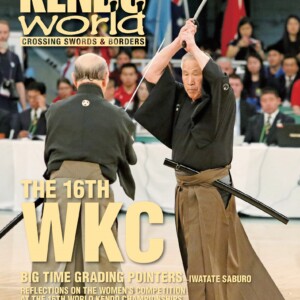
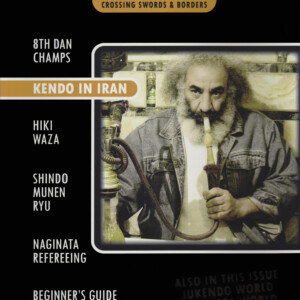
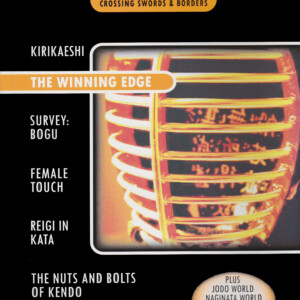

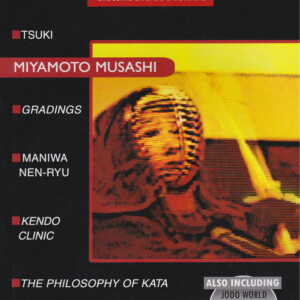
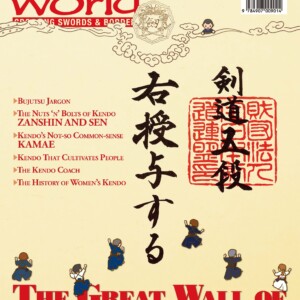
No comments yet.